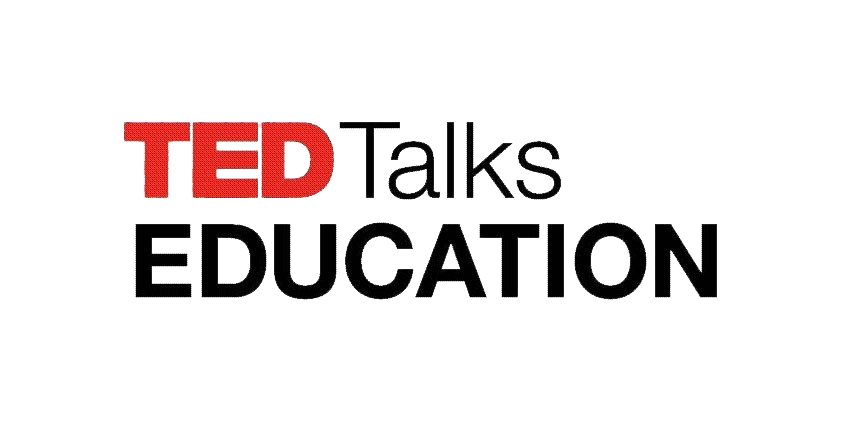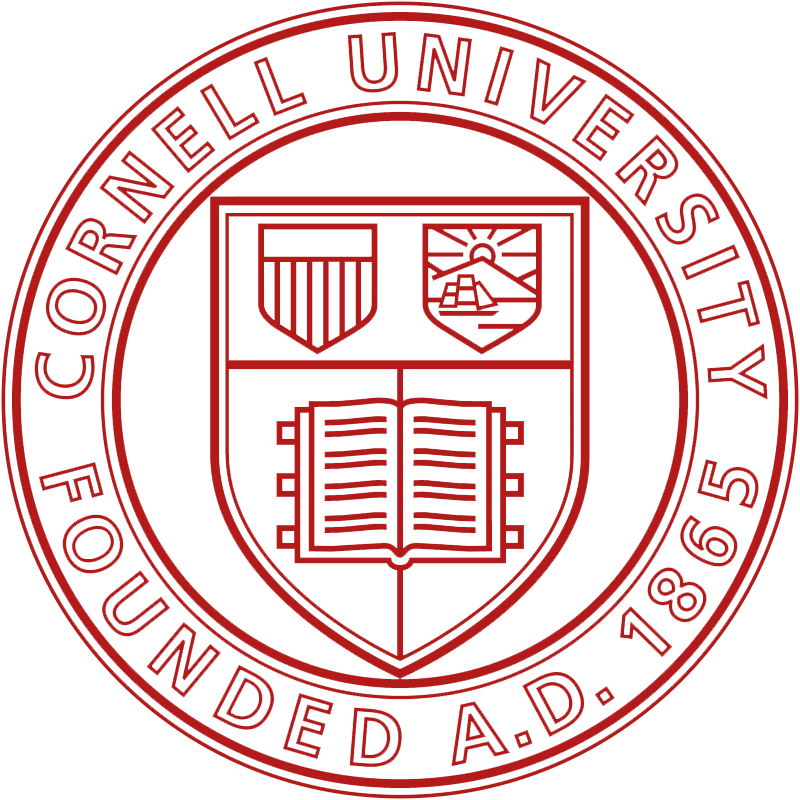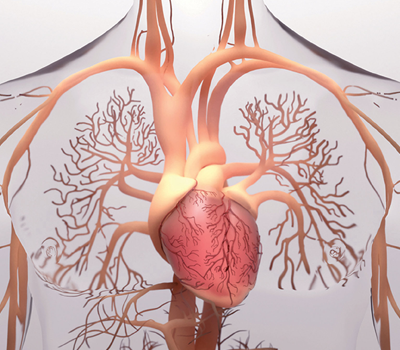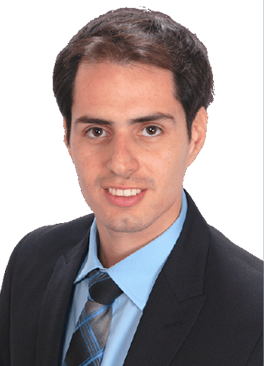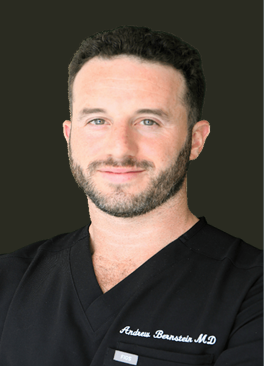Stem Cell Therapy vs Traditional Transplants: Comprehensive Comparison and Patient Guidance
Stem cell therapy and conventional organ or tissue transplants represent two transformative medical approaches for treating severe diseases by restoring or replacing damaged cells and organs. Understanding their mechanisms, benefits, risks, and future prospects empowers patients and clinicians to make informed decisions tailored to individual needs. This guide explores:
- How stem cell therapy works, its types, applications, advantages, and recovery.
- The procedures, matching process, benefits, and immunosuppression in traditional transplants.
- A head-to-head comparison of efficacy, cost, suitability, ethics, and regenerative influences.
- Strategies to prevent and manage graft-versus-host disease (GvHD).
- Emerging innovations in xenotransplantation, 3D bioprinting, gene therapy, and clinical trials.
- Answers to key patient questions.
- Ethical and regulatory considerations shaping treatment availability.
By mapping these themes, readers will navigate the nuances of regenerative medicine versus established transplant care in one comprehensive resource.
What Is Stem Cell Therapy and How Does It Work?
Stem cell therapy harnesses undifferentiated cells capable of self-renewal and specialization to repair or replace damaged tissues in conditions ranging from blood disorders to neurodegenerative diseases, a concept widely recognized by the National Institutes of Health (NIH). This regenerative approach relies on the unique ability of stem cells to sense injury signals, migrate to the affected site, and differentiate into the required cell type, restoring function and promoting healing in ways traditional transplants cannot.
Understanding stem cell behavior requires exploring their origins, therapeutic mechanisms, clinical applications, and post-treatment recovery.
What Are the Different Types of Stem Cells Used in Therapy?
Hematopoietic Stem Cells (HSCs) from bone marrow or peripheral blood regenerate blood and immune systems, as detailed by the Mayo Clinic.
- Mesenchymal Stem Cells (MSCs) from adipose tissue or umbilical cord stroma secrete immunomodulatory factors and support tissue repair, according to research published in *Stem Cell Research & Therapy*.
- Induced Pluripotent Stem Cells (iPSCs) reprogram adult cells to an embryonic-like state for personalized therapies, a breakthrough recognized by the Nobel Assembly.
- Embryonic Stem Cells (ESCs) harvested from early embryos offer the highest differentiation potential but face ethical and immunogenic challenges, as discussed by the International Society for Stem Cell Research (ISSCR).
Each type’s attributes—cell dose, differentiation capacity, and immune compatibility—determine its role in specific treatments.
Exploring all stem cell categories sets the stage for comparing hematopoietic transplantation to other regenerative approaches.
How Does Hematopoietic Stem Cell Transplantation Differ from Other Stem Cell Therapies?
Hematopoietic stem cell transplantation (HSCT) specifically replaces damaged blood-forming cells through high-dose chemotherapy followed by infusion of healthy stem cells. Unlike mesenchymal or induced pluripotent approaches, HSCT focuses on:
- Restoring bone marrow function after leukemia or lymphoma treatment, a standard practice outlined by the National Cancer Institute (NCI).
- Achieving durable immune reconstitution in genetic blood disorders, as evidenced by studies in *The New England Journal of Medicine*.
- Relying on autologous or allogeneic cell sources with rigorous donor matching, a critical aspect emphasized by the American Society for Transplantation and Cellular Therapy (ASTCT).
This targeted procedure contrasts with broader regenerative protocols aimed at musculoskeletal or neurological repair.
The range of treatable conditions broadens understanding of stem cell therapy’s medical impact.
What Medical Conditions Can Stem Cell Therapy Treat?
Stem cell interventions address diverse diseases:
- Hematologic malignancies (leukemia, lymphoma) via HSCT, with success rates for blood cancers often ranging from 60–70% according to recent studies.
- Autoimmune disorders (multiple sclerosis, rheumatoid arthritis) through immunomodulatory MSCs, showing promising results in clinical trials for conditions like Crohn’s disease, as reported in *The Lancet*.
- Orthopedic injuries (cartilage defects, osteoarthritis) with localized MSC injections, where efficacy for joint repair can be around 80% in some cases.
- Neurodegenerative conditions (Parkinson’s disease, spinal cord injury) using experimental neural progenitors, with ongoing clinical trials exploring their potential, as documented on ClinicalTrials.gov.
These applications highlight stem cells’ versatility across systemic and localized pathologies.
Mapping benefits and advantages clarifies why many seek these therapies over conventional approaches.
What Are the Benefits and Advantages of Stem Cell Therapy?
Patients may experience:
- Enhanced Regeneration – Direct replacement of damaged cells accelerates healing, a core principle of regenerative medicine.
- Reduced Rejection Risk – Autologous sources minimize immune mismatch, significantly lowering the risk of immune rejection compared to allogeneic transplants, as noted by the Mayo Clinic.
- Immunomodulation – MSCs secrete anti-inflammatory cytokines to protect tissues, a mechanism explored in numerous studies for conditions like graft-versus-host disease.
- Minimally Invasive Delivery – Infusions or injections avoid major surgery in many cases, contributing to faster recovery times.
These advantages offer regenerative potential where traditional transplants face donor shortages and lifelong immunosuppression.
Recognizing potential complications is crucial for balanced decision-making.
What Are the Risks and Side Effects of Stem Cell Therapy?
Potential adverse outcomes include:
- Graft Failure – Inadequate cell engraftment leading to treatment failure, a risk particularly in HSCT, as detailed by the NCI.
- Tumorigenicity – Risk of abnormal cell proliferation with pluripotent sources, a concern actively researched and mitigated in iPSC-based therapies, according to *Nature Medicine*.
- Infection – Immunosuppression during conditioning regimens can predispose to infections, a common complication managed with prophylactic measures.
- Immune Reactions – Allogeneic cells may trigger rejection or mild inflammatory responses, necessitating careful donor matching and monitoring.
Careful donor selection, rigorous cell processing, and follow-up protocols mitigate these risks, as emphasized by the FDA’s regulatory guidelines.
Understanding recovery milestones supports realistic patient expectations.
How Is Recovery After Stem Cell Therapy Managed?
Post-procedure recovery focuses on:
- Hematologic Monitoring – Regular blood counts track engraftment, a critical phase typically occurring within 2–4 weeks for hematopoietic procedures, with full immune reconstitution over 3–6 months, according to the Cleveland Clinic.
- Infection Prophylaxis – Antivirals, antibiotics, and antifungals protect against opportunistic infections, especially during periods of immunosuppression.
- Physical Rehabilitation – Tailored programs support functional restoration, especially after neurological or orthopedic therapies.
- Long-Term Surveillance – Periodic imaging, cardiopulmonary assessments, and quality-of-life evaluations ensure sustained benefits.
A structured recovery plan enables safe transition from acute care to outpatient management, setting the foundation for long-term outcomes.
What Are Traditional Transplants and Their Medical Procedures?
Traditional transplants involve surgically replacing diseased organs, tissues, or marrow with healthy donor counterparts. By restoring organ function directly, this approach offers established solutions for end-stage organ failure and hematologic disorders. Successful outcomes depend on precise donor matching, perioperative care, and lifelong immunosuppression in most allogeneic cases, as outlined by the United Network for Organ Sharing (UNOS).
Clarifying transplant types and processes highlights both their established role and inherent complexities.
What Types of Traditional Transplants Are Commonly Performed?
Common transplant categories include:
- Organ Transplants – Kidneys, livers, hearts, lungs for vital organ failure, with over 46,000 organ transplants performed in the U.S. in 2023, according to UNOS data.
- Bone Marrow Transplants – Hematopoietic stem cell replacement for blood cancers, a procedure performed thousands of times annually worldwide.
- Tissue Grafts – Skin, cornea, heart valves for localized tissue repair, often managed by tissue banks and specialized surgical teams.
These procedures restore function but require significant surgical expertise and postoperative management.
Understanding donor matching illuminates immunological considerations.
How Does Donor Matching and the Transplant Process Work?
Donor selection and transplant steps involve:
- HLA Typing – Matching human leukocyte antigens minimizes rejection risk, a crucial step for allogeneic transplants, as emphasized by the American Society of Histocompatibility and Immunogenetics (ASHI).
- Cross-Matching – Ensuring no preformed antibodies react with donor tissue, a final compatibility test before transplantation.
- Organ Procurement – Coordinated retrieval preserves graft viability, a complex logistical process managed by organ procurement organizations (OPOs).
- Surgical Implantation – Precision techniques secure vascular and structural integration, performed by highly specialized surgical teams.
Meticulous immunogenetic compatibility sets traditional transplants apart from many regenerative approaches.
What Diseases Are Treated with Traditional Transplants?
Recipients benefit from:
- Kidney failure in chronic renal disease, with kidney transplants being the most common organ transplant procedure globally.
- End-stage liver cirrhosis, often caused by hepatitis or alcohol-related liver disease.
- Advanced heart failure unresponsive to medical therapy, significantly improving survival and quality of life.
- Blood cancers through bone marrow transplantation, a curative option for many leukemias and lymphomas.
This scope underlines traditional transplants’ core role in modern healthcare.
What Are the Benefits and Advantages of Traditional Transplants?

Key strengths include:
- High Success Rates – Five-year survival often exceeds 80% for kidney and liver transplants, and 70% for heart transplants, according to data from the Organ Procurement and Transplantation Network (OPTN).
- Immediate Organ Function – Rapid restoration of critical physiologic processes, often seen immediately post-surgery.
- Well-Established Protocols – Decades of refined surgical techniques and immunosuppressive regimens, leading to predictable outcomes and management strategies.
These advantages continue to save lives where other therapies fall short.
Balancing these benefits against risks clarifies decision points.
What Are the Risks and Complications, Including Graft-versus-Host Disease?
Major complications encompass:
- Graft Rejection – Acute or chronic immune-mediated injury to the transplanted organ, occurring in a significant percentage of patients despite immunosuppression, with rates varying by organ and time post-transplant.
- Graft-versus-Host Disease (GvHD) – Donor immune cells attack recipient tissues in allogeneic bone marrow transplants, affecting 30-70% of patients depending on donor match and conditioning regimen, as reported by the NCI.
- Infection – Immunosuppressed status elevates risk of viral, bacterial, and fungal infections, a leading cause of morbidity and mortality post-transplant.
- Surgical Morbidity – Bleeding, thrombosis, or organ dysfunction related to surgery, inherent risks of any major surgical procedure.
Thorough risk management protocols aim to mitigate these critical concerns.
How Is Immunosuppression Used in Traditional Transplants?
Immunosuppressive therapy prevents rejection by:
These regimens balance graft tolerance against infection and toxicity risks, shaping long-term management strategies, as detailed by the American Society of Transplantation (AST).
What Is the Typical Recovery Process After a Traditional Transplant?
Recovery focuses on:
- Intensive Care Monitoring – Vital signs, graft perfusion, and early complications are closely monitored in the immediate postoperative period.
- Gradual Immunosuppressive Titration – Adjusting doses to maintain graft function with minimal toxicity, a process that can take weeks to months.
- Rehabilitation – Physical therapy supports return to daily activities, particularly after organ or marrow transplants.
- Lifelong Follow-Up – Regular imaging and lab tests to monitor graft health and patient well-being, a necessity for all transplant recipients.
A comprehensive recovery plan ensures sustainable transplant success and quality of life.
How Do Stem Cell Therapy and Traditional Transplants Compare?
Both therapies aim to restore lost function but differ in biology, logistics, and long-term considerations. A comparative overview of efficacy, cost, patient suitability, and ethical dimensions reveals distinct trade-offs that guide personalized treatment choices.
This table highlights key differences and paves the way to deeper analysis of each metric.
What Are the Success Rates and Efficacy Differences Between Both Treatments?
Stem cell outcomes vary significantly by disease and cell type. For instance, stem cell therapy for blood cancers has a success rate of 60–70%, while for joint repair and autoimmune conditions, it can be around 80% in specific clinical contexts, according to various clinical studies. Organ transplants typically deliver higher immediate function, with five-year survival rates often exceeding 80% for kidney and liver transplants, but stem cell approaches may offer superior long-term tissue regeneration with potentially fewer immune complications, particularly with autologous sources.
Understanding financial implications shapes patient planning.
How Do Costs Compare Between Stem Cell Therapy and Traditional Transplants?
Cost drivers include:
- Cell Processing and Biomanufacturing in stem cell therapy, which can be substantial for personalized cell products.
- Surgical and Hospital Expenses in organ transplantation, including donor procurement, surgical fees, and extensive post-operative care.
- Post-Treatment Care such as lifelong immunosuppression versus rehabilitation protocols.
On average, stem cell treatments can cost 30–50% less than full organ transplants, though insurance coverage varies widely and can be a significant factor in patient access, as noted by healthcare economic analyses.
Who Is Most Suitable for Stem Cell Therapy vs Traditional Transplants?
Ideal candidates for stem cells include:
- Patients requiring hematologic or autoimmune reconstitution, where HSCT or MSC therapies are indicated.
- Individuals with localized tissue injuries seeking minimally invasive repair, such as cartilage defects.
- Those ineligible for major surgery due to comorbidities, for whom less invasive cell therapies might be an option.
Conventional transplants suit patients with irreversible organ failure and good surgical risk profiles, emphasizing immediate restoration over gradual regeneration, as determined by transplant centers like the Cleveland Clinic.
What Are the Key Ethical Considerations in Both Treatment Modalities?
Critical debates focus on:
- Embryonic Stem Cell Use versus adult or induced pluripotent sources, a long-standing ethical discussion.
- Equitable Access given high costs and limited donor organs, raising concerns about healthcare disparities.
- Informed Consent complexities in experimental protocols, particularly for novel regenerative therapies.
These discussions influence regulatory frameworks and public acceptance, as highlighted by bioethics committees.
How Does Stem Cell Therapy Potentially Reduce Immunosuppression Needs?
Mesenchymal stem cells (MSCs) modulate T-cell responses, promoting tolerance and potentially lowering the dosage or duration of immunosuppressive drugs after allogeneic transplants. Clinical trials have shown promising results for cell therapy, including stem cells, in solid organ transplantation, demonstrating feasibility and safety in minimizing immunosuppression and inducing tolerance, with some studies suggesting MSCs may improve long-term outcomes and reduce risks associated with immunosuppression, according to research published in *Transplantation* and other journals.
What Are the Risks and Prevention Strategies for Graft-versus-Host Disease (GvHD)?
GvHD remains a significant complication of allogeneic marrow and stem cell transplantation, where donor immune cells attack recipient tissues. It affects 30-70% of patients undergoing allogeneic HSCT, depending on various factors, and is a major cause of morbidity and mortality, as reported by the NCI. Prevention and prompt treatment are essential to ensuring patient safety and graft success.
What Causes Graft-versus-Host Disease in Allogeneic Transplants?
GvHD arises when:
- Donor T-Cells recognize recipient antigens as foreign, particularly when there is an HLA mismatch.
- Host Antigen Presenting Cells trigger donor lymphocyte activation, initiating an immune cascade.
- Inflammatory Cytokines amplify tissue damage in skin, liver, and gut, leading to the characteristic symptoms.
Understanding pathophysiology guides targeted prophylactic measures, as detailed by the American Society of Hematology (ASH).
How Can GvHD Be Prevented and Treated?
Preventive and therapeutic strategies include:
- Antithymocyte Globulin or Alemtuzumab for T-cell depletion, reducing the number of reactive donor T-cells.
- Methotrexate and Calcineurin Inhibitors to suppress donor lymphocyte activation, standard prophylactic agents.
- Mesenchymal Stem Cells infusions to promote immune tolerance in steroid-refractory cases, an emerging therapeutic option supported by clinical trials.
Early intervention protocols improve prognosis and patient comfort, as emphasized by transplant guidelines.
What Are the Symptoms and Prognosis of GvHD?
Clinical presentation often features:
- Skin Rash progressing from maculopapular lesions to epidermal sloughing, often the first sign.
- Liver Dysfunction with elevated bilirubin and transaminases, indicating liver involvement.
- Gastrointestinal Distress including nausea, diarrhea, and mucosal ulceration, which can be severe.
Mild acute GvHD responds well to steroids, while severe cases require multi-agent therapy and carry higher mortality risks, with chronic GvHD significantly impacting long-term quality of life and survival, according to the NCI.
What Is the Future of Organ Transplantation and Regenerative Medicine?
Innovations in xenotransplantation, bioprinting, gene editing, and clinical research promise to reshape transplantation and regenerative care over the next decade. By integrating cutting-edge technologies, future therapies aim to overcome donor shortages, improve graft longevity, and broaden applications.
How Are Emerging Technologies Like Xenotransplantation and 3D Bioprinting Shaping Transplantation?
These breakthroughs address the organ scarcity crisis and could render autologous constructs the new transplant standard.
What Advances Are Being Made in Gene Therapy and Stem Cell Research?
CRISPR-based editing of hematopoietic stem cells has produced durable cures in sickle cell disease and beta-thalassemia, as evidenced by landmark studies published in *The New England Journal of Medicine* and *Nature Medicine*. Meanwhile, gene-modified MSCs enhance homing to injured tissues. Such hybrid approaches merge gene and cell therapy to tackle both genetic and degenerative conditions.
What Is the Current Landscape of Clinical Trials in Stem Cell and Transplant Therapies?
Numerous trials are evaluating:
- MSC infusions for inflammatory bowel disease, with several phases 2 and 3 trials underway globally.
- Neural stem cell transplants in spinal cord injury, showing promising early results in functional recovery.
- Xenograft heart implants in high-risk patients, building on recent successful pig-to-human transplants.
This robust pipeline, extensively documented on ClinicalTrials.gov, underscores the rapid expansion of regenerative interventions.
How Is the Regenerative Medicine Market Expected to Grow and Impact Patient Care?
With a projected Compound Annual Growth Rate (CAGR) of 19.2% from 2025 to 2033, the global regenerative medicine market is set to exceed USD 233 billion, according to industry reports. Increased funding and regulatory approvals will accelerate the translation of laboratory innovations into mainstream therapies, offering more personalized and less invasive options for patients worldwide.
What Are Common Patient Questions About Stem Cell Therapy vs Traditional Transplants?
Patients frequently ask direct queries when comparing these treatments. Below are concise, featured-snippet-optimized answers.
What Is the Difference Between Stem Cell Transplant and Bone Marrow Transplant? A stem cell transplant may use cells from peripheral blood or umbilical cord; a bone marrow transplant specifically harvests cells from marrow. Both aim to restore healthy blood cell production but differ in cell source and collection techniques, as explained by the Mayo Clinic.
What Are the Benefits of Stem Cell Therapy Over Traditional Transplants? Stem cell therapy offers enhanced tissue regeneration, reduced surgical risk, and potentially lower immunosuppression when using autologous cells compared to organ transplant surgery and lifelong drug regimens, according to the Cleveland Clinic.
What Are the Risks of Stem Cell Therapy? Risks include graft failure, infection during conditioning, immune reactions to allogeneic cells, and possible abnormal cell growth with pluripotent sources, as outlined by the FDA.
How Long Is Recovery After a Stem Cell Transplant? Engraftment typically occurs within 2–4 weeks for hematopoietic procedures, with full immune reconstitution and functional recovery achieved over 3–6 months under close monitoring, as detailed by the NCI.
Is Stem Cell Therapy Considered Regenerative Medicine? Yes, stem cell therapy is a cornerstone of regenerative medicine because it promotes tissue repair and functional restoration through cellular regeneration mechanisms, a definition supported by the NIH.
How Do Ethical Considerations Affect Stem Cell Therapy and Traditional Transplants?
Ethical debates around stem cell research and transplant allocation shape policy, public trust, and treatment accessibility. Balancing innovation with moral standards ensures responsible medical progress.
What Are the Main Ethical Debates Surrounding Stem Cell Research?
Primary concerns involve:
- Embryonic Stem Cells and embryo use versus adult cell sources, a debate with significant societal and religious implications.
- Equity of Access to costly, experimental therapies, raising questions about fairness and justice in healthcare.
- Consent for Biological Materials in creating iPSCs, ensuring donor autonomy and privacy.
These discussions influence research funding and regulation, as addressed by national bioethics commissions.
How Do Regulatory Bodies Influence Treatment Availability and Safety?
Agencies like the FDA in the U.S. and the European Medicines Agency (EMA) in Europe establish frameworks for:
- Clinical Trial Approval ensuring safety and efficacy through rigorous testing phases.
- Manufacturing Standards under Good Manufacturing Practice (GMP) to ensure product quality and consistency.
- Post-Market Surveillance monitoring long-term outcomes and identifying unforeseen risks.
Strict oversight preserves patient safety while fostering innovation, as mandated by public health authorities.
How Do Patient Rights and Consent Impact Treatment Decisions?
Informed consent processes must cover:
- Experimental nature and potential risks of investigational therapies, especially for novel stem cell treatments.
- Alternative treatments and expected outcomes, allowing patients to make comparative decisions.
- Data privacy related to genetic and cellular information, protecting sensitive patient data.
Empowering patients through transparent communication underpins ethical medical practice, a principle enshrined in medical ethics guidelines.
Regulations and societal values will continually shape both stem cell and transplant therapies in coming years.
Stem cell therapy and traditional transplant procedures each offer unique pathways to restore health—one through cellular regeneration, the other by direct organ replacement. As regenerative medicine technologies like bioprinting, gene editing, and xenotransplantation mature, the lines between these approaches will blur, expanding options for tailored care. By weighing mechanisms, success rates, risks, costs, and ethical dimensions, patients and clinicians can collaborate on the optimal strategy for every clinical scenario. Continuous innovation and responsible governance promise to elevate both fields toward safer, more effective therapies for generations to come.
Authored By:
Dr. Charles Pereyra
Regenerative Health Expert
Founding Physician at Springs Rejuvenation

